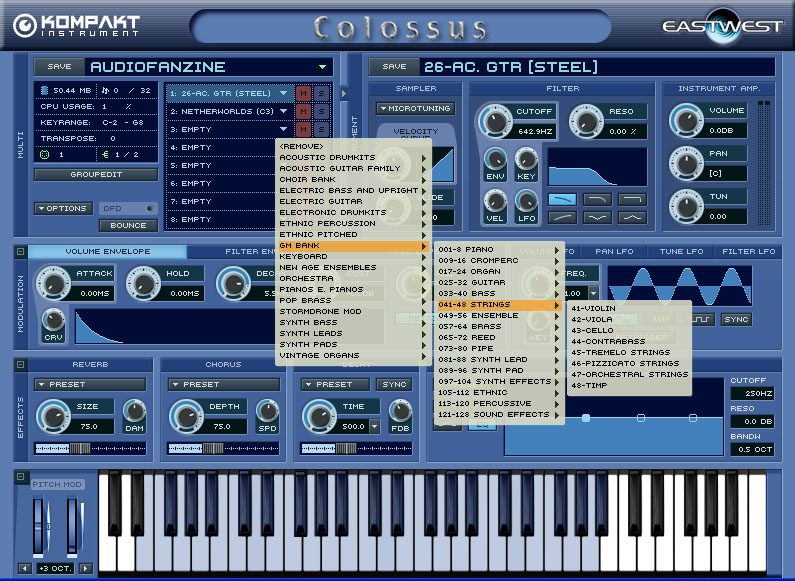
Native Instruments Bandstand Torrent
Feb 10, 2010 Search titles only; Posted by Member: Separate names with a comma. Newer Than: Search this forum only. Display results as threads. Native Instruments - Bandstand. Native Instruments Bandstand combines modern player with more than 2 GB of professional samples and 128 instruments. Rich bass, tight drums, guitars shiny, juicy strings, sonorous piano and many other high-end-sounds - the quality of these samples sets a new level of such instruments. GM1, GM2, XG®, GS® and HQ® control systems.
Gta 5 launcher download pc. Like the Rodney Dangerfield of the electronic-music world, General MIDI (GM) gets no respect. Nonetheless, many of its protocols have infiltrated electronic sound design and orchestration practices. For example, using RPNs (Registered Parameter Numbers) and NRPNs (Non-Registered Parameter Numbers) to tweak and animate synthesizer sounds first gained popularity with GM instruments.
Consistent drum-note mapping arose from Roland, and it crystallized with the GM standard. Many readers may recall the convoluted procedural hoops you needed to jump through just to get someone else's MIDI drum parts to play back properly. Installing from the single DVD-ROM and authorizing Bandstand was a simple process; I was set up and playing in less than five minutes. Native Instruments provides AU, RTAS, and VST versions for the Mac and DirectX, RTAS, and VST versions for Windows. I used my dual-processor 1.42 Ghz Power Mac G4 with 2 GB of RAM running OS X 10.3.9. In addition to running Bandstand as a standalone app, I hosted the plug-in in MOTU Digital Performer 4.61, Apple Logic 7.1, and Ableton Live 5. Bandstand's ability to quickly load and set up instruments in response to various MIDI commands and Program Change messages differentiates it from its software GM siblings.
That ability also made it a good candidate to pair with PG Music Band-in-a-Box 12, which required a bit of additional setup, as the latter does not host plug-ins on the Mac version (instead, you must use an intermediary host such as Granted Software Rax). Another convenient feature is the software's ability to load and play Standard MIDI Files (SMFs). You can even create a playlist, potentially qualifying Bandstand on a notebook computer as a handy, all-in-one device for bands and solo performers who rely on supplemental MIDI tracks. Bandstand is a 16-part multitimbral instrument that arranges its presets in a Browser, with 16 banks arranged according to GM-instrument categories and 8 instruments in each category. A button toggles between the first and second groups of 8 instrumental categories. A preset can include the instrument type, channel assignment, EQ and effects settings, transposition, and lots more.
Bandstand provides none of the additional instruments that appear in related standards such as GS, XG, or GM2, although it supports some of the MIDI Control Change messages that those later standards allow. 1: To load Bandstand with sounds, simply drag an -instrument from the Browser located just above the virtual keyboard. Free adsense clicks. On the lower right you can load Standard MIDI Files, create a playlist, and render an audio file of the music. Bandstand's two main regions are the Play page and the Mix page; each is a different arrangement of 16 slots. On either page, a strip dealing with preset management runs across the top of the screen. A pull-down menu lets you select from a library of presets; Bandstand gives you a half-dozen presets as starting points and a blank preset so you can create presets from scratch. Subsequent buttons let you initialize load and delete presets.

To the right of those, a pair of buttons toggle between the Play and Mix pages, and an Options button lets you set global preferences for buffer size, overall Velocity response, latch or in-place soloing modes, and the sound library path, as well as the current preset automation choices. On the Play page, you can load instruments by dragging-and-dropping them from the Browser section into one of the 16 cells occupying the upper half of the page (see Fig.